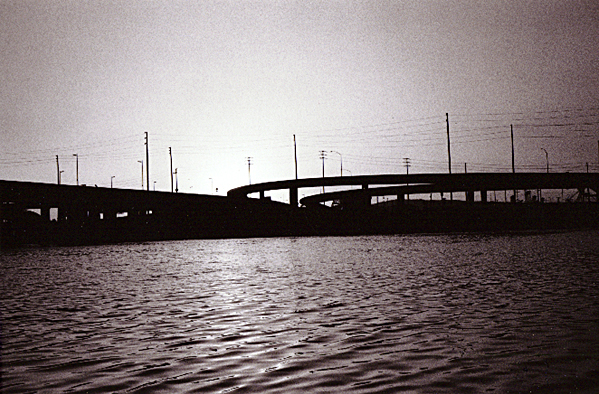
Pretty only from a distance—the 710 in Long Beach
Yesterday, Pigeon Master Josef published an article on the GRID alternative to the I-170 expansion/extension/extortion process, which would commit billions in public money fixing a failed paradigm by simply building more of the same. GRID would replace freeway port truck traffic with underground electric robot shuttle trains passing silently and out of sight under our communities, preserving them from being paved over for more freeway lanes or clogged by BigDig-style tributary congestion.
Trucks, cars, and pavement have been proving themselves inefficient, expensive, and deadly for eighty years now. The more we build, the worse grows congestion, which we take as a mandate to build yet more lane space, which continues to increase congestion through induced demand. All the while fraying our nerves, dirtying our lungs, and taking land away from homes, businesses, parks, libraries, schools, and just about everything else that makes a city worth living in.
I am one of the people who brought GRID to Josef’s attention. And readers of this cycling blog might wonder what GRID offers to the bicycle riders of eastern LA County, since we don’t pedal on freeways or through San Pedro Bay terminal facilities.
Plenty!
For one thing, traffic doesn’t begin and end on freeways—it begins and ends on streets…the streets you ride. And that includes truck traffic. GRID will carry containers not only to the big railyards in the north and east, but also to many of the local distribution centers through its reconfigured loop circuit. And by starting directly from the ports, it will eliminate a good deal of traffic in the southern bounds of the county as well. Cyclists all along the twenty-eight mile corridor will have fewer heavy trucks to contend with on their streets—trucks that are more deadly to cyclists (and motorists and pedestrians) than are cars.
For another, GRID plans to place tunnels as far as possible under river channels—and rehabilitate the rivers while doing it. Since almost every channel under consideration has a bike path along it, that would make the ride there all the more attractive. And GRID could easily upgrade those bike paths while at work on the tunnels.
And for a third, GRID would be built with private money—meaning more of Metro’s cash would be available for bicycle amenities, instead of being swallowed up by hulking megafreeways towering over asphyxiated neighborhoods.
Check out GRID’s website as Josef recommended. It may look visionary—and it is!—but it can be built entirely with current technology and local labor.
Not a bad idea—especially compared to some others out there….